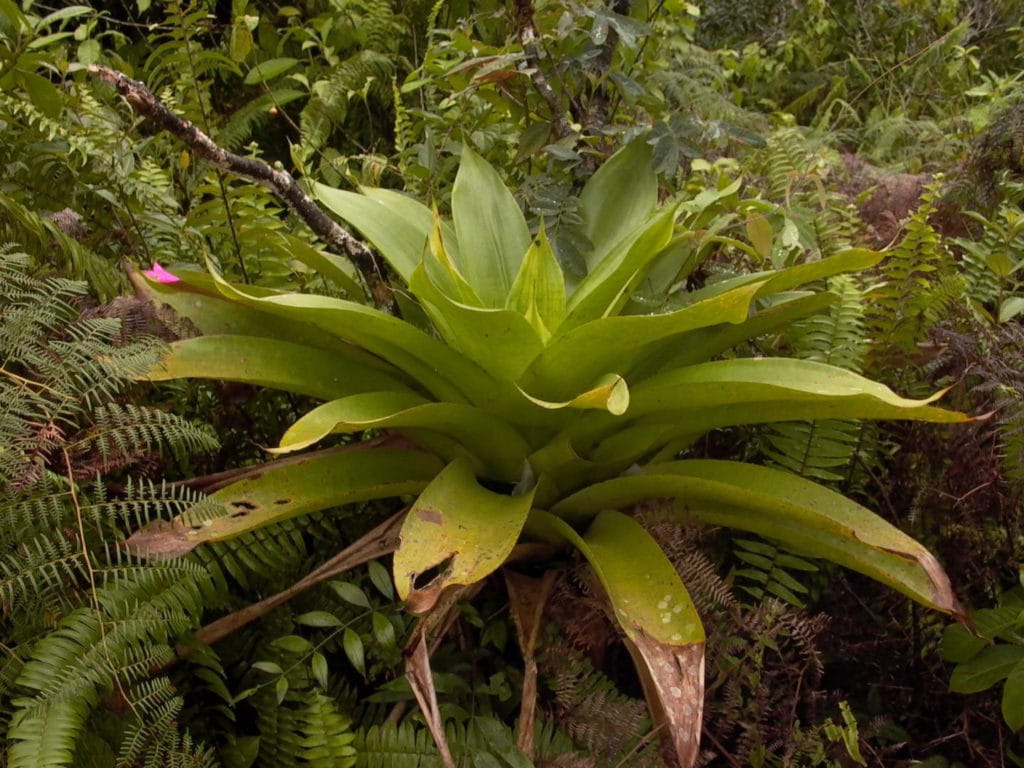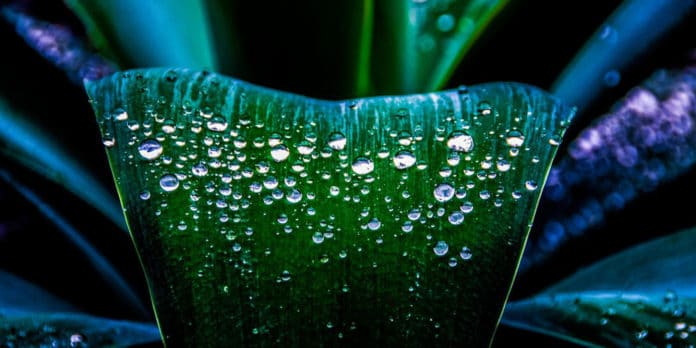Changes in global and regional precipitation regimes are among the most pervasive components of climate change. Intensification of rainfall cycles, ranging from frequent downpours to severe droughts, could cause widespread, but mostly unknown, alterations to the trophic structure and ecosystem function.
A new study now uncovered detailed insights into the effects of climate change on the delicate food webs of the neotropics.
Scientists across seven different sites throughout Central and South America conducted multi-site coordinated experiments to show how variation in the quantity and evenness of rainfall modulates trophic structure in 210 natural freshwater microcosms. Using the insect larvae that live in the water trapped by bromeliad plants as a model ecosystem, they found that food webs became top-heavy with predators when there were significant day-to-day variations in rainfall.
Co-author Diane Srivastava, professor of zoology in UBC’s faculty of science, said, “This has knock-on effects for all parts of the rainforest system because the larval insects in the bromeliads are destined to become winged adults that then are part of the forest ecosystem around them.”
To accomplish the results, scientists performed similar experiments on bromeliads. The bromeliads were covered with rain shelters, and scientists watered them on strict schedules to replicate 30 different rainfall patterns in each site.
Srivastava said, “This is the first study, to my knowledge, where we have a replicated study of how precipitation patterns affect an entire food web in multiple sites. Every day we’d run around with a watering can with a list of how much water each bromeliad should get on each day. We had a customized rainfall schedule for each bromeliad in every field site.”
Scientists found that extreme rainfall patterns resulted in top-heavy food webs. The opposite was exact when rainfall was delivered on an even schedule, with similar amounts of water given to the plants every day. Under those conditions, there were fewer predators and more prey among the larval insects.

Srivastava said, “We were expecting to see the opposite pattern. We often think of predators being the most sensitive to environmental change, but we got the opposite result. One reason may be that, when the water level in the bromeliad went down during drier days, there was less aquatic habitat, so the prey was condensed into a small amount of water together with their predators. This can benefit predators and disadvantage prey.”
“These findings can be extrapolated to other rainfall-dependent aquatic ecosystems. In any small pond or lake, which is primarily determined by rainfall, we can expect to see a similar effect. We should be concerned about these findings, because we’ve shown that these extreme perturbations in rainfall really do affect t of energy through the food web.”
Journal Reference:
- Romero, G.Q., Marino, N.A.C., MacDonald, A.A.M., et al. Extreme rainfall events alter the trophic structure in bromeliad tanks across the Neotropics. Nat Commun 11, 3215 (2020). DOI: 10.1038/s41467-020-17036-4
